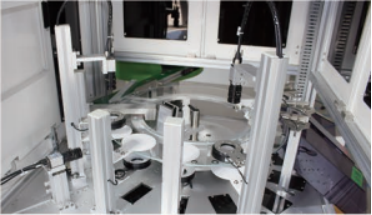power steering seals
Understanding Power Steering Seals
Power steering systems are crucial components in modern automobiles, providing drivers with enhanced control and maneuverability. At the heart of this system lies a series of seals that ensure proper functioning and longevity. This article explores the importance, types, maintenance, and common issues associated with power steering seals.
Importance of Power Steering Seals
Power steering seals play a vital role in the hydraulic steering system. They are responsible for preventing the leakage of hydraulic fluid, which is essential for transmitting power within the system. Without effective seals, the power steering system would fail to operate efficiently, leading to increased steering effort, reduced responsiveness, and ultimately, steering system failure.
These seals not only prevent fluid leakage but also protect the system from contaminants such as dirt, dust, and moisture. Keeping these harmful elements out is essential for maintaining the integrity and longevity of the power steering system. Therefore, healthy seals are integral to the overall safety and operability of any vehicle.
Types of Power Steering Seals
There are several types of seals used in power steering systems, each designed for specific functions
1. O-Rings These circular seals are commonly used to create a tight seal between two components. They are versatile and can handle pressure fluctuations within the steering system.
2. Lip Seals These seals have a lip that helps to retain fluid within the system while preventing dirt and debris from entering. Lip seals are especially effective in high-pressure environments, making them a popular choice for power steering applications.
3. Rotary Seals Often used in the hydraulic pump of the power steering system, rotary seals allow for the movement of fluid while minimizing leakage around rotating shafts.
4. Gaskets Although not seals in the traditional sense, gaskets are crucial for sealing interfaces between fixed components in the system. They help maintain pressure and prevent fluid loss.
Each type of seal is designed to withstand specific conditions, such as temperature changes and pressure variations, ensuring the reliable operation of the power steering system.
power steering seals

Maintenance of Power Steering Seals
Regular maintenance is key to ensuring that power steering seals remain in good condition. Here are some tips for maintaining these critical components
- Check Fluid Levels Regularly inspect the power steering fluid levels and top them up if necessary. Low fluid levels can lead to increased wear on seals and other components.
- Inspect for Leaks Keeping an eye out for any signs of fluid leaks around the power steering pump and steering gear is essential. Early detection can prevent damage and costly repairs.
- Use Quality Fluid Always use the manufacturer-recommended power steering fluid. The right fluid composition is crucial for optimal seal performance and overall system health.
- Replace Worn Seals If you notice any signs of wear, such as cracks or brittleness in the seals, it is essential to replace them promptly to avoid further damage to the system.
Common Issues with Power Steering Seals
Over time, power steering seals may become damaged due to wear and tear, environmental factors, or the use of incorrect fluids. Common issues associated with power steering seals include
- Fluid Leaks A primary concern, leaks can significantly impact steering performance and lead to increased strain on the pump.
- Contamination If seals fail to keep out dirt and debris, contaminants can enter the system, leading to further damage and reduced efficiency.
- Increased Steering Effort Worn seals can lead to a lack of hydraulic pressure, making it difficult to steer the vehicle.
In conclusion, power steering seals are essential for the proper functioning and longevity of a vehicle's power steering system. Understanding their importance, types, and how to maintain them can help drivers enjoy a smoother and safer driving experience. Regular checks and timely replacements can prevent costly repairs, ultimately ensuring the vehicle operates at its best.
-
Understanding the Front Main Engine Seal: Purpose, Maintenance, and Installation
News Jul.29,2025
-
Understanding O-Rings and Seal Rings: Types, Applications, and Custom Solutions
News Jul.29,2025
-
Understanding Crankshaft Oil Seals: Rear Seals, Pulley Seals, and Their Role in Engine Integrity
News Jul.29,2025
-
The Importance of Front and Rear Crankshaft Seals in Engine Performance and Oil Management
News Jul.29,2025
-
Crank Oil Seals: Functions, Types, and Cost Considerations in Engine Maintenance
News Jul.29,2025
-
A Comprehensive Guide to O-Rings and Seals: Types, Materials, and Global Applications
News Jul.29,2025
-
Mastering Diesel and Performance Engine Maintenance: A Guide to Critical Oil Gaskets
News Jul.28,2025
Products categories















